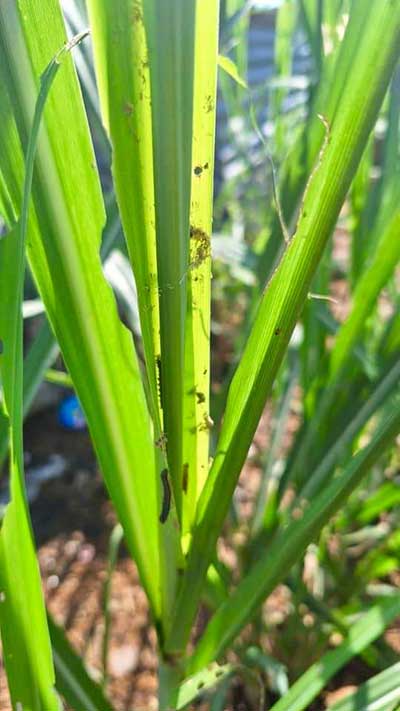
By Glazyl Y. Masculino
BACOLOD CITY – Senator Juan Miguel Zubiri said on Wednesday that he will ask the Department of Agriculture (DA) to release funds for Negros Occidental and other areas in Negros Island affected by an armyworm infestation.
Zubiri learned about the infestation on corn and sugar plantations upon his arrival on Tuesday night. He stated that the infestation is an offshoot of the El Niño phenomenon or the long dry spell.
Zubiri said he will call DA Secretary Francisco Tiu Laurel Jr. to request emergency funds to aid farmers in the province and other areas to combat the infestation.
“The only way to fight it is to allow the DA to provide our farmers with pesticides and insecticides to counter these infestations,” he said.
He noted that alternatives to fight the armyworm infestation are not as effective as pesticides and insecticides, which are expensive. “We need to ask the DA for funding,” the senator added.
Based on the latest data from the Office of the Provincial Agriculturist (OPA) dated June 27, nine areas in the province have been affected by the infestation.
These areas include the cities of Himamaylan and Kabankalan and the towns of Isabela, Binalbagan, Moises Padilla, Ilog, La Castellana, Cauayan, and Murcia.
The infestation mostly affected corn plantations in 40 barangays in these localities. Sugarcane and banana plantations were also hit by the armyworm infestation in Himamaylan City and Isabela town, respectively.
The infestation affected a total of 663 farmers, covering an area of 558.23 hectares of plantations.
The highest number of affected farmers was in Himamaylan City, with 307, followed by 172 in Isabela town, 99 in Binalbagan, 39 in Moises Padilla, 36 in Kabankalan City, and five each in Ilog and La Castellana.
The OPA has recommended the emergency purchase of insecticides and personal protective equipment (PPE), assignment of standby vehicles for mobility in upland areas, augmentation of labor force for spraying operations, and continuous surveillance, assessment, orientation, and pest control and management in collaboration with local government units (LGUs), the DA, Sugar Regulatory Administration (SRA), and other partner agencies.
They also recommended the continuous conduct of sustainable, participatory crop protection activities in the communities through people’s organizations and the activation of the Bantay Peste Brigade.
Currently, the LGUs are on alert regarding the pest infestation in the province, according to the OPA.
The OPA has provided available pesticides and pheromone attractants (lure) and facilitated aerial spraying in collaboration with the SRA and partner agencies.
They have also mobilized the OPA Climate Resiliency Management Task Force and conducted a series of information drives on expected pest outbreaks after a long drought, as well as training on pest surveillance, management, and control.
















